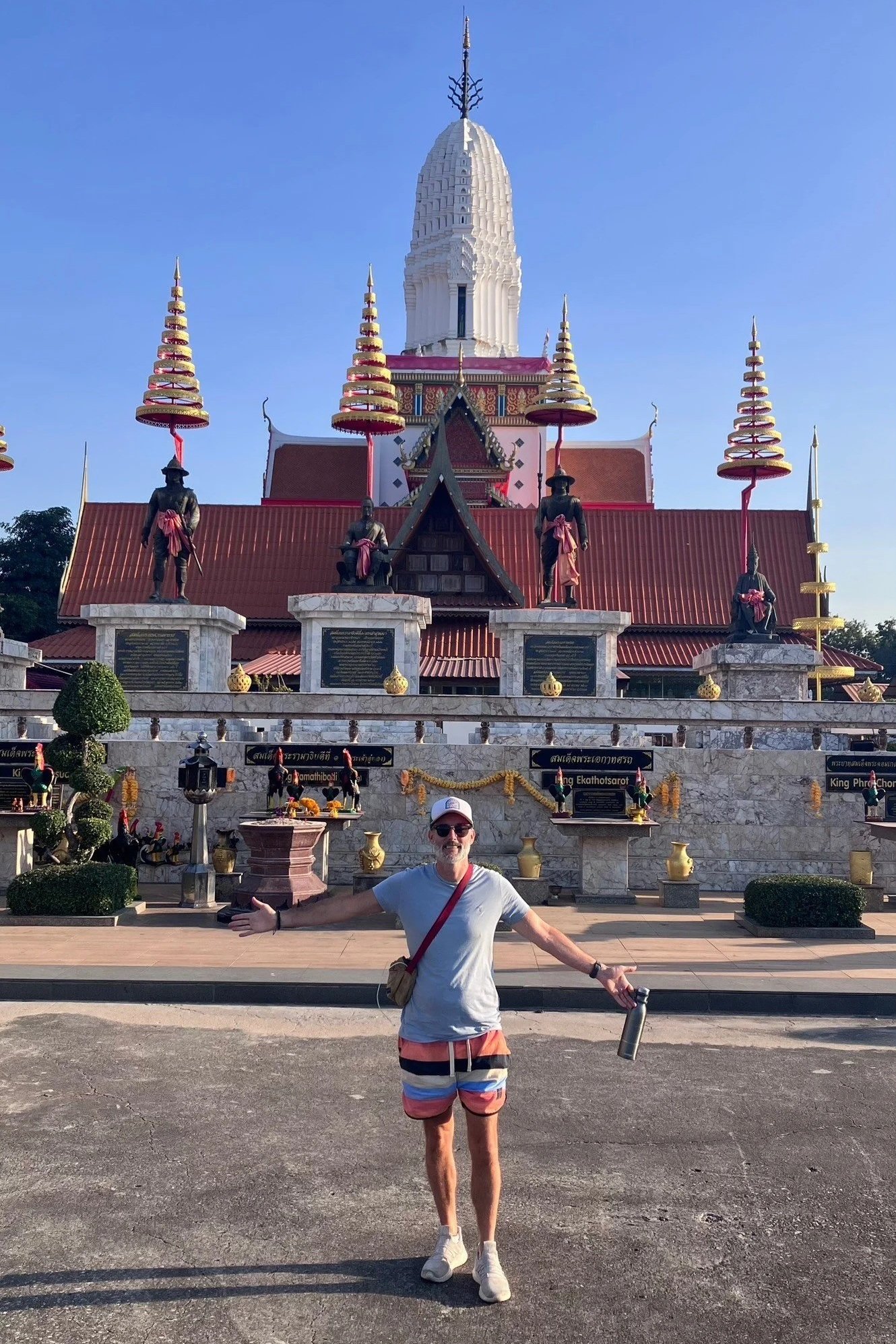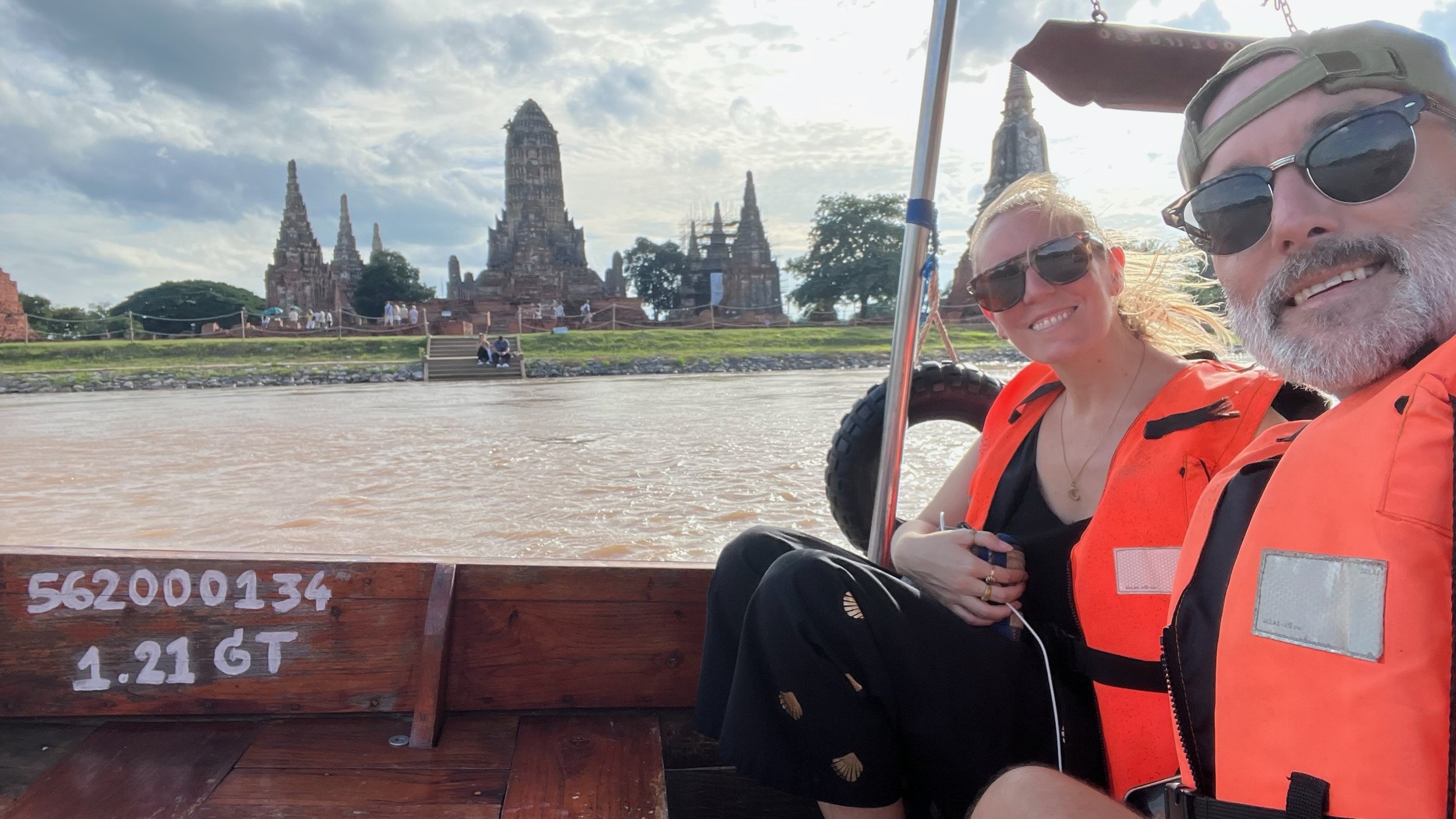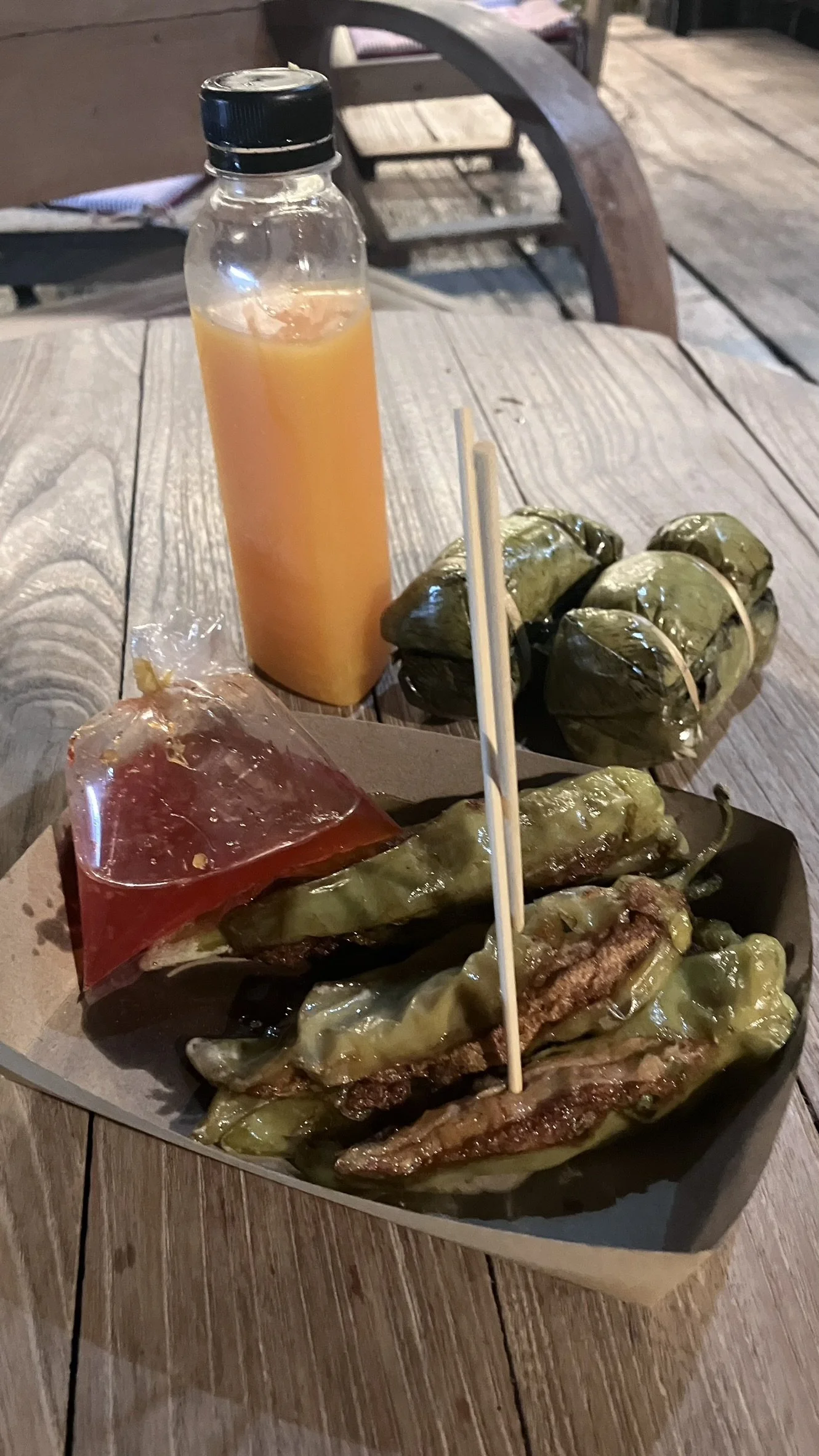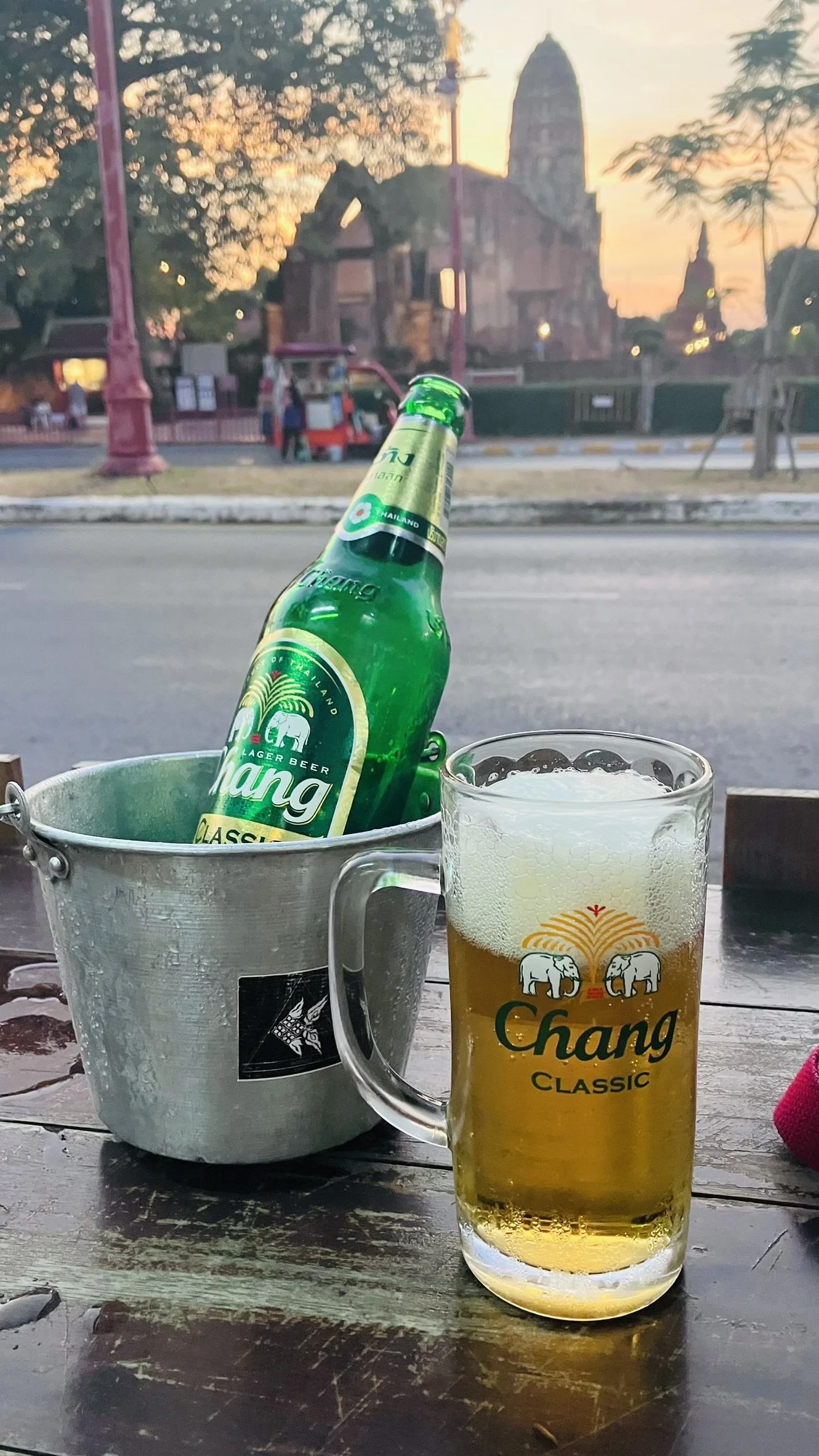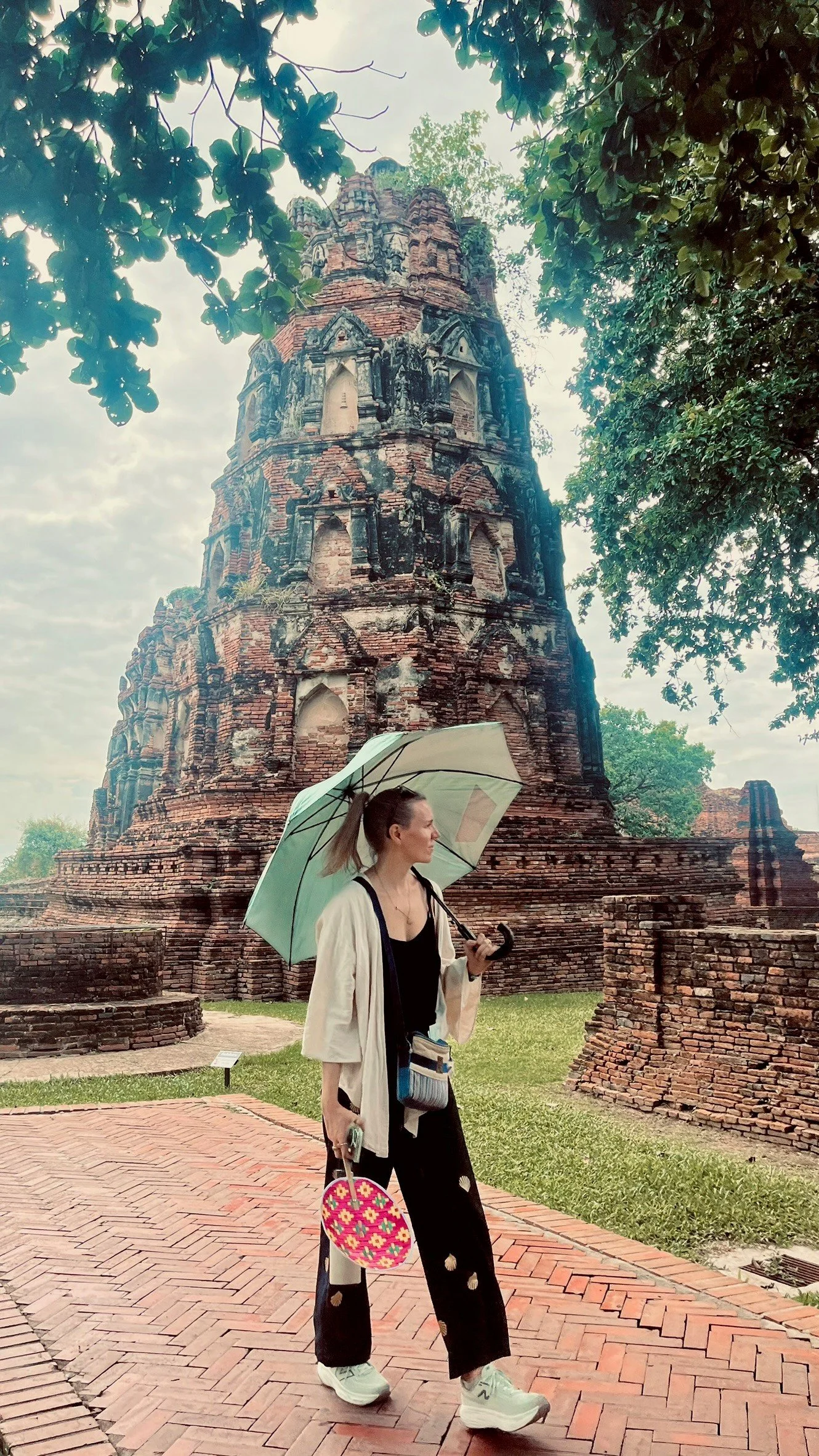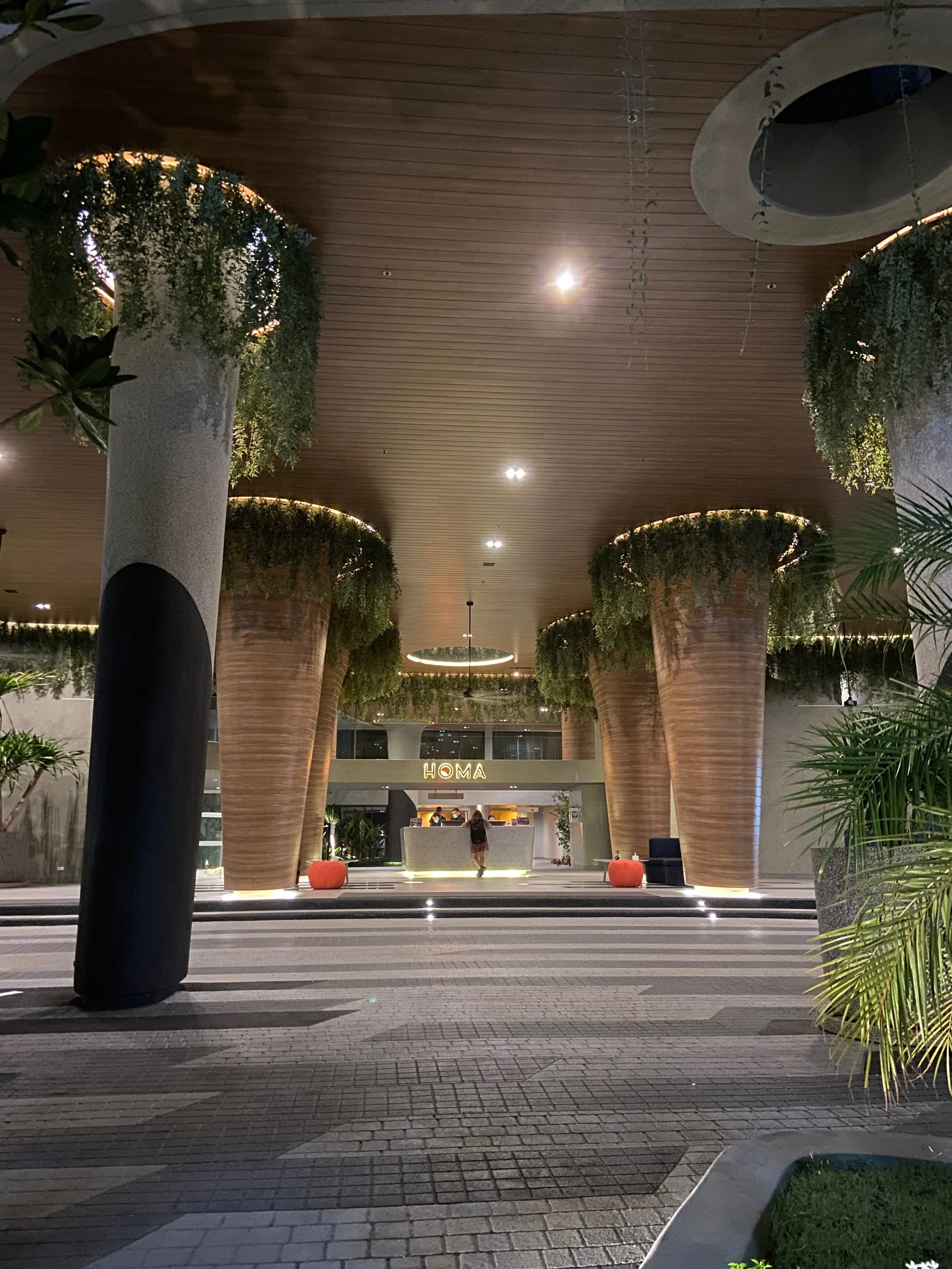Guide to Ayutthaya: Temples, Roosters and the Ruins of an Empire
This post may contain affiliate links, meaning we get a commission if you decide to purchase through our links at no cost to you. This helps fund Slower Travels without costing you a cent!
There are worse ways to spend a few days in Thailand than drifting through the crumbling ruins of a former famous empire, sweating quietly under a merciless sun while being stared down by a thousand stone Buddhas. So it was that I found myself in Ayutthaya, ancient capital of Siam, UNESCO darling, and home to the kind of photogenic decay that Instagram fever dreams are made of.
There are plenty of Ayutthaya travel guides out there, but hopefully this article will tell you more than just what to do in Ayutthaya. I want to share what it’s like to visit this ancient city and get a real sense of walking back in time.
Top Places to Visit in Ayutthaya
1. Wat Mahathat
Home to Ayutthaya’s most iconic image the Buddha head gently encased in tree roots. It is an Ayutthaya must see for first time visitors and photographers alike. The most important temple in the area, the monastery for the royals.
2. Wat Phra Si Sanphet
Once part of the royal palace, this site features three towering chedis that have become a symbol of Ayutthaya’s ancient grandeur and is one of the top attractions.
3. Wat Chaiwatthanaram
Arguably the most photogenic temple complex, with Khmer-style towers and riverside views. Popular for wedding photoshoots and sunset visits.
4. Wat Phanan Choeng
An active temple still in daily use, housing a massive 19-meter golden seated Buddha within a richly decorated hall.
5. Wat Lokaya Sutharam
Known for its large reclining Buddha, this quieter site offers a peaceful break from the more crowded locations.
6. National Museum
Offers a compelling glimpse into Ayutthaya’s golden age, with treasures, temple relics, and royal artefacts that bring the city's ruined grandeur to life.
Chao Sam Phraya National Museum
Famous Ayuthaya Food to Try
Roti Sai Mai: Ayutthaya’s signature street dessert — candy floss wrapped in paper-thin roti, sweet, colourful, and wildly addictive.
Grilled River Prawns: Giant freshwater prawns, grilled to perfection and served with spicy dipping sauce — Ayutthaya on a plate.
Boat Noodles (Kuay Tiew Rua): Rich, spiced noodle soup served in small bowls — a floating market classic now found on land.
Khao Mok Kai: Thai-style chicken biryani — fragrant yellow rice with tender chicken, often served with a tangy green sauce.
Quick Practicalities
How to Get to Ayutthaya
Ayutthaya is just north of Bangkok and surprisingly easy to reach, whether you’re after speed, comfort, or a bit of adventure. Here are the most common ways to get there:
By Train
This is hands down the most scenic and atmospheric way to arrive. Trains leave regularly from Bangkok’s Hua Lamphong Station (and now also Krung Thep Aphiwat Central Terminal), and the journey takes about 1.5 to 2.5 hours, depending on the service. It’s incredibly affordable, currently priced at 10 baht, and the ride offers a window into rural Thailand, featuring rice paddies, local vendors, and the occasional chicken on board. It’s a little chaotic, but that’s half the charm.
By Minivan or Bus
Minivans and buses depart frequently from Mo Chit Northern Bus Terminal in Bangkok. The trip takes around 1.5 to 2 hours and is a popular option for both locals and budget travellers. Minivans are faster but can be cramped; buses are a bit slower but more comfortable and relaxed.
Taxi
You can easily book a Grab taxi for around 600–800 Baht and create your own DIY tour of the highlights mentioned above. Ask to be dropped at Ayutthaya Train Station, then walk straight to the nearby pier to catch a boat and explore from there.
Private Car Tour
If you’re short on time or travelling in a group, a private car is a smooth, door-to-door option. The journey from Bangkok takes about 1.5 hours, depending on traffic. It’s not the cheapest way to get there, expect to pay around 3,000 Baht, but it offers complete flexibility. Most drivers will take you to several key temples, and some tours even include a boat cruise option.
By Boat (Yes, Really)
For something unique, you can travel from Bangkok to Ayutthaya by river cruise along the Chao Phraya. These full- or half-day trips are more about the journey than speed, often including meals and guided temple stops along the way. It’s a slow but stunning way to arrive, tracing the same lifeline that once fed the ancient kingdom.
By Plane? Not Quite.
There’s no airport in Ayutthaya, so flying isn’t really an option. The closest airport is Don Mueang International (DMK) in Bangkok, just a short hop away from rail and road connections to Ayutthaya.
How Much Time is Needed for Ayutthaya?
A full day covers the key sites; stay overnight if you want a slower pace and a chance to see sunrise/sunset.
Best Time to Visit Ayutthaya?
Cool season (Nov–Feb). Otherwise, bring water, a hat, and a tolerance for sweating.
Pro Tip
The boat tour at sunset gives you the smug satisfaction of feeling like you’ve discovered something, even though every guidebook mentions it.
Trip Diary
Day 1: The Arrival: Tamarind and Temples
After the short ride from Bangkok in the predictably spartan third class carriage, zero airconditioning, of course, and a gentle mix of sweat, street food, and adventure hanging in the air, the monks at the back dozed peacefully, seemingly immune to it all. I was happy to be here and couldn’t stop smiling. I couldn’t wait to throw myself on the back of a motor taxi and check into the wonderfully kitsch Tamarind Guesthouse, which sounds quaint and rustic because it is. A ramshackle wooden structure, partially held together by hanging vines and the sheer willpower of its owner. A cat watched me check in. Possibly the manager. Possibly the reincarnated soul of some ancient Thai general. Hard to say.
From here, Ayutthaya simply unfolded, ragged, ancient, and strangely alive.
Day 2: The Venice of the East… With Elephants
The first stop on my Ayutthaya journey is the National Museum. This wonderful museum will help fill in the blanks on how this strategic location became such a powerhouse during the 15th to 17th centuries.
Ayutthaya wasn’t some forgotten corner of old Siam. At its height, it was one of Asia’s great power centres, a trading empire where European merchants rubbed shoulders with Chinese, Japanese, and Persian traders, all drawn by the city’s wealth and its exclusive trade seal with China. If you wanted to do business with the Middle Kingdom, you came through Ayutthaya. Simple as that.
The wealth brought grand palaces, floating markets, and over 400 temples, a skyline of gilded rooftops and towering chedis. European diplomats called it the Venice of the East, though with more elephants and considerably fewer powdered wigs. And, as prosperity tends to do, it attracts trouble. The Burmese, in particular, developed an unfortunate habit of crossing the border uninvited. In response, local fighters honed their skills, and in certain circles, it’s said this is where Thai boxing, Muay Thai, first took shape: not for sport, but for survival.
Wat Mahathat: Where Trees Eat Gods
There’s something deeply poetic and vaguely unsettling about a tree that’s decided to slowly consume a Buddha’s head. At Wat Mahathat, you find one of Ayutthaya’s most iconic sights: a perfectly serene stone face nestled inside the roots of an enormous bodhi tree like a divine hostage.
Built in 1370, Mahathat was once the kingdom’s spiritual heart, its massive chedi dominating the skyline. This was the Mount Meru of the Kingdom, the beating heart of Buddhism in the area, located near the royal palace and was the royal monastery until the Burmese came in 1767. The chedi, essentially giant bell-shaped reliquary towers, once held sacred relics and ashes of monks. Today, they sit cracked open like cosmic Easter eggs, their contents long looted or lost.
The astute among you may notice the architecture of the area is based on the Cambodian Khmer style, like those in Angkor Wat, the earlier superpower of the area. If you're a history buff, it makes sense to visit the powerful kingdoms in the area in order. For example, visit Angkor first, then Suthothai, and then Ayutthaya, finishing in Bangkok to see it chronologically correctly.
The Ruins Whisper Stories
In 1952, a significant discovery was made at Wat Phra Sri Sanphet, a hidden chamber crammed with Buddha images and relics, stashed away for centuries like some forgotten royal insurance policy. Nobody’s quite sure who hid them or why, but it’s safe to assume they weren’t planning on the Burmese showing up with torches and a strong interest in precious metals.
Wat Phra Sri Sanphet was never your average neighbourhood temple; this was the king’s private spiritual bunker. No chanting monks or humble offerings here, just gold, ceremony, and the kind of excess only a ruling class can pull off with a straight face. At one point, it housed a towering 16-meter Buddha wrapped in 250 kilograms of gold leaf, a glittering monument to faith, power, and perhaps a slight overcompensation. Naturally, when the Burmese sacked Ayutthaya in 1767, the gold disappeared faster than a politician’s promise.
Wandering the old brick stupas and leaning prangs, I was struck by the silence of it all. Even the birds seem reluctant to chirp. The air hangs heavy, as if the very stones resent being disturbed from their 400 year nap.
Now, only the bones remain outstandingly elegant, with chedis leaning defiantly into the tropical sky, ruins that whisper of former glory while playing background to guided tours, and the occasional tourist melting into a puddle under the sun.
Your photos, you’ll take from here, will still be truly outstanding.
The River and The Floating Kingdom
Later, I took a boat along the river that encircles the old island. There’s no better way to understand Ayutthaya’s strategic brilliance than from the water. The capital sat snugly on an island ringed by rivers, nature’s moat.
This natural moat made Ayutthaya nearly impossible to storm by land, while simultaneously turning it into a thriving hub of regional trade. Foreign merchants could sail right up to the city’s edge, offload spices, silks, and guns, and strike deals without ever stepping far from the docks. The result? A city protected by water and fed by it equal parts fortress and marketplace, reflecting temples in its currents while quietly managing an empire
Sunset cruises trace the city’s island outline, drifting past Wat Phutthaisawan and the riverside towers of Wat Chaiwatthanaram. From the river, the city’s design reveals itself as a brilliant loop fortified by the Chao Phraya, Lopburi, and Pa Sak rivers.
This is a beautiful way to take in the city, from the water, where so much of its life once flowed. It's impossible to overstate the importance of the Chao Phraya River to Ayutthaya’s rise and prosperity. Winding its way through the heart of the old kingdom, the river continues its journey south, all the way to Bangkok
Wat Chaiwatthanaram
First stop, we pressed on to Wat Chaiwatthanaram, the kind of temple that makes even the most jaded traveller instinctively reach for their camera.
The temple rises like the spiked crown of some ancient god-king. Prangs and chedis stab the sky while wedding photoshoots unfold beneath their shadows. Thai couples in full traditional regalia pose gracefully while sweating profusely, flanked by photographers who serve dual roles: preventing families from tripping over 600-year-old bricks while making sure everyone looks fabulous. The trend has surged in popularity thanks to a recent Thai TV series set amidst these majestic ruins.
I wandered among crumbling Buddha statues, many of which had lost their heads during Ayutthaya’s more violent chapters, namely, the Burmese sack of 1767. The Burmese, it seems, had a thing for decapitating Buddhas, a curious pastime they indulged in with great enthusiasm. The result? Today’s oddly calming spectacle of hundreds of headless Buddhas sitting peacefully under a warm sun.
Wat Phutthaisawan and the Cult of the Rooster
Next up was Wat Phuttaisawan, a striking riverside temple located just outside the old city walls. Built in 1353 by King U-Thong, the first ruler of Ayutthaya, it’s one of the oldest temples in the region. The towering white prang (Khmer-style spire) rises above the complex, surrounded by rows of weathered Buddha statues and cloisters that echo the grandeur of a bygone era. It's a quiet, often overlooked spot full of character, history, and the soft sound of the river nearby
At the front of the site, near the river's edge, lies the monument of King Naresuan — the legendary defender of Ayutthaya — who famously faced the Burmese not across a negotiating table but in open battle. Most notably, he settled one diplomatic dispute the old-fashioned way: a one-on-one duel atop elephants, emerging victorious and securing his place in the national mythology.
The rooster, as it turns out, was Naresuan’s talisman, representing his fighting spirit. The locals have embraced this, flooding the monument with brightly painted chickens in various sizes, creating what can only be described as a surreal poultry graveyard.
In true Thai fashion, it somehow works a blend of fierce patriotism, good luck charms, and a touch of inexplicable kitsch. I lit incense. Out of respect. Or self-defence. The rooster gods were watching
The Floating Evening
As the sun slipped into the Chao Phraya’s murky horizon, I continued on my river cruise. This time, mercifully, I was handed a cold beer. We drifted lazily past Wat Phanan Choeng, home to one of the largest seated Buddhas in Thailand, glowing gold inside its lacquered temple like a Vegas headliner, if Vegas had more humility and fewer feather boas.
We passed simple riverside homes, monks in saffron robes sitting quietly on wooden porches, and small boys cannonballing into the river like unguided torpedoes.
It was one of those moments where you briefly consider never returning home.
Ayutthaya: Where Dinner Fights Back
Of course, no trip to Ayutthaya is complete without experiencing the local cuisine, which sits somewhere between a culinary delight and a minor sensory assault, among the more deceptively polite offerings: Prik Yuak Sord Sai (พริกหยวกสอดไส้), Thai stuffed green chillies. These aren’t the fire-breathing dragons you might expect; Prik Yuak are mild, sweet green peppers, lovingly stuffed with minced pork or fish, then deep-fried or steamed to golden, guiltless perfection. (Pictured)
The town is famous for its ‘Boat noodles’, rich, dark broths laced with herbs, spices, and (if you’ve chosen wisely) just the right amount of mystery. Traditionally served from narrow boats along the canals, the portions are modest, though this is more an encouragement to order five bowls than any hint of restraint.
Then there are the freshwater prawns: absurdly large, vaguely terrifying creatures hauled straight from the Chao Phraya River, grilled to perfection and served with dipping sauces that range from pleasantly tangy to borderline pyrotechnic.
As night falls, the markets come alive with a hypnotic mix of sizzling woks, plastic chairs, neon lights, and the comforting smell of things being fried that perhaps shouldn't be. You can wander for hours: skewers of chicken, pork, squid (or “probably squid”), banana pancakes flipped in buckets of centimetres of oil, and endless stalls selling the fantastically tasty mango sticky rice.
The prices, meanwhile, are suspiciously low, the sort that make you briefly consider moving here permanently, if only to maintain your new diet of grilled meat, sugar, and mangos.
And while some dishes may leave your taste buds applauding, others serve as a gentle reminder that not all chillies are created equal. Approach the condiments with caution.
Day 3: The Day it All Unravelled
By Day 3, I had developed that unmistakable feeling: I had stayed too long. And Ayutthaya had decided to fight back.
I decided to rent a push bike today, fully loaded with the ambition to use my pedal to push travel further out of town for a sense of adventure. Google Maps, however, began sending me on increasingly impractical routes to temples that either didn’t exist or had long been reclaimed by foliage and existential despair.
At one such non-temple, a rather large black dog appeared out of nowhere and decided to chase me for what felt like several days but was probably a mile. My recently purchased Garmin watch, in a moment of admirable commitment to real-time data, began screaming that my heart rate had exceeded 200 bpm. Whether this was helpful is debatable; I feared that slowing down might simply allow the hungry hound to finish me off properly.
After cycling 4km back into town (with what little dignity I still possessed), I attempted some spiritual recalibration at the famous reclining Buddha, only to find that someone had thoughtfully pulled what looked like a giant duvet over her head. She was having a nap.
Undeterred but no longer optimistic, I abandoned the bicycle and hailed a taxi to the old Dutch village. Naturally, it was closed. Upon leaving, I was then pursued this time on foot by another group of street dogs, apparently offended that I’d dared to disturb their slumber during off-hours.
Ayutthaya had had enough of me. It was time to catch the bus north to Sukhothai, another former capital, and, presumably, a place where Google Maps, stray dogs, and reclining Buddhas might offer a warmer welcome.
Ayutthaya: Glorious Ruins, Angry Dogs, and Excellent Noodles
Ayutthaya has everything you could ask for: ancient ruins, epic battles, photogenic temples, oversized prawns, mildly homicidal street dogs, and Google Maps routes that seem designed to test your life choices. It’s beautiful, bizarre, and occasionally trying to kill you, but always with a smile.
The empires may have crumbled, the gold may have vanished, but the woks still sizzle, the rivers still flow, and the monks still sit quietly while tourists sweat their way through history.
Bangkok was built on the bones of Ayutthaya, a modern capital tracing the ghost lines of a fallen one. Look closely, and you’ll spot its echoes everywhere. Take the detour, you’ll be glad you did









